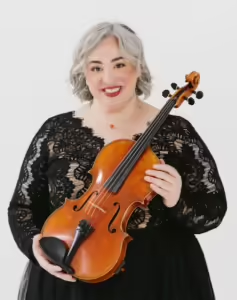Ernest Chausson: Poème (Op. 25)
The Poème (Op. 25) that Chausson composed in 1896 remains the most recognizable calling card from that fruitful period near the end of his life. The Belgian superstar Eugène Ysaÿe had asked him for a violin concerto, but he demurred, calling it a “huge undertaking” and “the devil’s own task.” Instead of a proper concerto, Chausson took inspiration and the title from a novella by the Russian writer Ivan Turgenev to fashion a dreamy, freeform score he originally labeled The Song of Triumphant Love: Symphonic Poem for Violin and Orchestra. With the same gift for cutting to the heart of material that he showed in his musical language, Chausson chopped the title down simply to “Poem,” and he published both the orchestral original and his own transcription for violin and piano in 1898. The introspective flow and utter lack of gratuitous showiness have made this poetic gem a perennial favorite of those violinists who place feelings above fireworks.
Eugène Ysaÿe: Rêve d’enfant
At the dawn of the twentieth century, the Belgian violinist Eugène Ysaÿe (1858-1931) had an international career that few musicians could rival, spanning from the United States to Russia. The years he had trained in Paris and his ongoing friendships with major French composers meant that, in his own concert showpieces, Ysaÿe followed the Gallic fashion of valuing beautiful sound and heartfelt expression over formal rigor and technical flash. While on tour and fretting about the well-being of his six-year-old son who had been ill, Ysaÿe penned this sweet and simple Rêve d’enfant (“Child’s Dream”).
Ernest Chausson: Concert for Piano, Violin, and String Quartet (Op. 21)
French chamber music was resurgent in the 1880s after a long lull when it was subsumed by opera and other grand spectacles, and Chausson took up the trend by making his first foray into chamber music since a piano trio from his student days. Pausing his work on an opera based on King Arthur that took him eight years to complete, Chausson drafted the unusual Concert for Piano, Violin, and String Quartet (Op. 21) between 1889 and 1891. Rather than signifying a concerto in the Romantic mold, with the soloist playing against an orchestra, his use of the term concert (French for concerto) was instead a nod to the Baroque tradition of a group concerto or concerto grosso, in which individuals and the larger group work together. Ysaÿe appeared as the solo violinist at the premiere in Brussels in 1892.
Using a device popularized by his teacher César Franck, Chausson organized the entire piece around a unifying theme, heard at the beginning with a performance instruction that translates as “determined” or “purposeful.” Those three notes initiate a calm introduction, and they also launch the animated body of the movement, heading a theme introduced by the solo violin and piano. The wide-ranging finale completes this cyclical form by referencing earlier themes, including the all-important three notes from the beginning.











